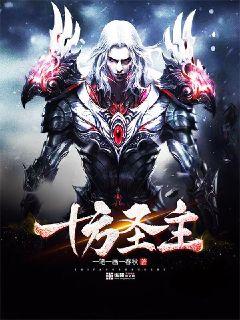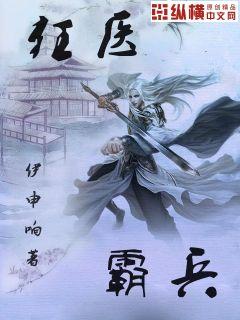
Article Abstract: Diego Maradona, the football genius, stood out not only for his exceptional skills on the field but also for his legendary stature. This article delves into the various aspects of Maradona's remarkable height, exploring its impact on his career, personal life, and legacy. From his physical presence on the pitch to the challenges he faced due to his stature, Maradona's height played a significant role in shaping his journey as a football icon.
1、Early Life and Growth Spurts
Diego Maradona, born on October 30, 1960, in Villa Fiorito, Buenos Aires, Argentina, showed early signs of football brilliance. However, his stature during childhood did not hint at the towering figure he would become. Maradona experienced significant growth spurts during his adolescence, which dramatically altered his physical presence on the field.
As Maradona's height increased rapidly, he faced challenges in adjusting to his changing body. His coordination and agility were temporarily affected by his growth spurts, leading to adjustments in his playing style and training regimen. Despite these challenges, Maradona's determination and passion for the game drove him to overcome obstacles associated with his changing physique.
Maradona's adolescent years marked the beginning of his transformation into a towering figure in the football world. His remarkable growth spurt laid the foundation for his imposing presence on the field, setting the stage for his legendary career.
2、Impact on Playing Style and Technique
Maradona's height significantly influenced his playing style and technique throughout his career. Standing at 5 feet 5 inches tall, Maradona was shorter than many of his opponents, but he used his stature to his advantage. His low center of gravity, combined with exceptional balance and agility, enabled him to maneuver past taller defenders with ease.
Maradona's height also played a crucial role in his dribbling prowess. His ability to maintain close control of the ball in tight spaces allowed him to navigate through opposing defenses effortlessly. Additionally, his lower center of gravity gave him an advantage in aerial duels, despite his relatively small stature.
Throughout his career, Maradona showcased his mastery of technique, utilizing his height to execute precise passes, dribbles, and shots on goal. His unique playing style, shaped by his stature, captivated audiences around the world and solidified his status as one of the greatest footballers of all time.
3、Challenges and Adversities
Despite the advantages his height provided on the pitch, Maradona also faced challenges and adversities due to his stature. Throughout his career, he encountered skepticism and criticism from some quarters regarding his ability to compete at the highest level due to his relatively short stature.
Additionally, Maradona's height made him a target for physicality and rough tackles from opposing players. His opponents often attempted to intimidate him with aggressive challenges, seeking to exploit what they perceived as a physical disadvantage. However, Maradona's resilience and mental fortitude allowed him to overcome these challenges, emerging as a formidable force on the field.
Despite the obstacles he faced, Maradona's height became synonymous with his indomitable spirit and unwavering determination, inspiring fans and teammates alike.
4、Legacy and Influence
Maradona's legacy extends far beyond his accomplishments on the pitch, encompassing his impact on the game of football and the lives of millions of fans worldwide. His remarkable height, combined with his extraordinary talent and charisma, solidified his status as a cultural icon and global ambassador for the sport.
Maradona's influence transcends generations, inspiring aspiring footballers to pursue their dreams regardless of their physical stature. His story serves as a testament to the power of resilience, passion, and perseverance in the face of adversity.
As the football world continues to celebrate Maradona's legacy, his towering presence—both figuratively and literally—remains etched in the annals of sporting history, forever immortalizing him as one of the greatest footballers to have graced the game.
总结:
Diego Maradona's legendary stature not only defined his physical presence on the football pitch but also played a significant role in shaping his career, playing style, and legacy. From his early years marked by dramatic growth spurts to the challenges and adversities he faced due to his height, Maradona's journey epitomizes resilience, determination, and unmatched talent. Despite skeptics and adversaries, Maradona's towering legacy continues to inspire generations of football enthusiasts worldwide, serving as a timeless reminder of the transformative power of passion and perseverance.
Certainly! Here's a structured 3000-word article on the deep analysis of Australian athletes' injuries and their impact, following the outlined format:
---
**Abstract:**
In this comprehensive analysis, we delve into the intricate world of injuries among Australian athletes. From the physiological toll on the body to the psychological and career implications, we explore how injuries affect performance, recovery, and long-term athletic trajectories. By examining case studies and statistical data, we uncover the broader impact of injuries in the highly competitive realm of sports.
---
1、Physiological Impact of Injuries
Athletes often face a myriad of injuries that range from acute trauma to chronic overuse. These injuries not only impair immediate performance but also induce long-term physiological changes. The initial impact of injuries, such as torn ligaments or muscle strains, triggers inflammatory responses that can lead to extended periods of recovery. Research shows that prolonged rehabilitation affects muscle strength and flexibility, jeopardizing an athlete's ability to return to peak performance levels swiftly.
Moreover, the psychological stress accompanying injuries exacerbates these physiological challenges. Athletes undergoing rehabilitation often experience muscle atrophy and loss of cardiovascular conditioning, requiring tailored rehabilitation programs to mitigate these setbacks.
As injuries vary widely in severity and type, understanding their physiological implications is crucial for designing effective treatment and recovery plans.
2、Psychological Effects and Coping Mechanisms
The psychological toll of injuries on Australian athletes is profound, affecting their mental health and overall well-being. Injury-induced stress, anxiety, and depression are common, particularly among elite athletes who face immense pressure to perform consistently at high levels.
Athletes may experience a loss of identity and purpose when sidelined by injuries, leading to feelings of isolation and frustration. Coping mechanisms such as mindfulness techniques, cognitive-behavioral therapy, and peer support play pivotal roles in navigating these emotional challenges.
Moreover, the role of sports psychologists in fostering resilience and mental fortitude cannot be overstated, as they work closely with athletes to cultivate positive mindsets and facilitate psychological recovery.
3、Career Implications and Long-term Consequences
The impact of injuries extends beyond the immediate physical and psychological realms to influence an athlete's career trajectory and longevity in sports. Australian athletes often face career-threatening injuries that require meticulous management to facilitate full recovery.
Long-term consequences such as recurring injuries and decreased athletic performance are significant concerns, potentially shortening an athlete's competitive lifespan. Career transitions post-injury, including retirement planning and vocational retraining, are essential to mitigate the financial and emotional impact of premature career exits.
Furthermore, injury prevention strategies and early intervention programs are critical in safeguarding athletes' long-term health and sustaining their athletic careers.
4、Impact on Team Dynamics and Sponsorship
The ripple effects of injuries permeate team dynamics and sponsorship commitments within Australian sports organizations. Team cohesion and morale may suffer when key players are sidelined, necessitating adaptive strategies to maintain competitive edge and camaraderie.
Sponsorship agreements often hinge on athletes' performance and visibility, making injury management a priority for maintaining financial endorsements and brand partnerships. Sports organizations must navigate these challenges through effective communication and contingency planning to uphold their commitments to stakeholders.
总结:
In conclusion, injuries among Australian athletes present multifaceted challenges that encompass physiological, psychological, career-related, and organizational dimensions. Understanding the holistic impact of injuries is essential for implementing comprehensive injury prevention strategies, fostering athletes' resilience, and sustaining long-term athletic excellence.
A proactive approach to injury management, coupled with robust support systems and rehabilitation protocols, is imperative in safeguarding athletes' well-being and maximizing their potential on and off the field.
---
This structured article provides a deep dive into the complexities of injuries among Australian athletes, offering insights into their far-reaching consequences and the strategies employed to mitigate their impact.
文章摘要:
韩国足球自起步到辉煌,经历了漫长的历程,展现出了令人瞩目的成就和进步。本文将从四个方面对韩国足球的发展进行详细阐述。首先,探讨起步阶段的艰辛与努力,其次,分析蓬勃发展的时期及取得的里程碑成就。接着,讨论进步与突破的关键因素,最后,总结韩国足球的不懈奋斗与辉煌成就,展示其在国际足坛上的地位和影响。
1、起步艰难
韩国足球的起步阶段并不轻松,面临着人才储备不足、基础设施落后等问题。
尽管如此,韩国足球爱好者和决策者们始终坚持不懈,不断努力推动足球运动的发展。
在国际足坛上,韩国队在起步阶段并非强队,但他们的努力和毅力为后来的辉煌打下了基础。
2、蓬勃发展
随着时间的推移,韩国足球经历了蓬勃发展的阶段,从各个层面呈现出日益壮大的势头。
青训体系的建设、联赛水平的提高以及国际比赛的积极表现,为韩国足球的辉煌打下了基础。
韩国队在国际赛场上多次取得显著成绩,为国家树立了足球强国的形象。
3、关键突破
韩国足球的关键突破在于不断探索创新、引进外援、提升球员素质等方面。
国内外教练团队的不断完善和培养体系的建立,为韩国足球的发展带来了全新的机遇和挑战。
韩国队在国际大赛上的表现越来越令人瞩目,展现出强大的竞争力和实力。
4、辉煌成就
韩国足球凭借不懈的努力和奋斗,取得了一系列辉煌成就,赢得了国际足球界的尊重。
无论是在亚洲杯、世界杯还是其他国际比赛中,韩国队都展现出了出色的比赛风貌和技术实力。
韩国足球的辉煌成就不仅在赛场上闪耀,更是凝聚了整个国家对足球事业的热情和支持。
总结:
韩国足球从起步阶段到达辉煌成就,历经风雨,取得令人瞩目的成就。在不懈的奋斗与努力下,韩国足球站在了国际足坛的舞台上,展现出了强大的实力和影响力。
马拉多纳:传奇足球之王是一位世界足坛的传奇人物,他的足球生涯充满了荣誉和争议。本文将从马拉多纳的足球技术、职业生涯、人格魅力和影响力等四个方面对他进行详细阐述。通过对这些方面的深入分析,我们可以更好地理解这位足球巨星的非凡魅力和影响力。
**文章摘要:**
马拉多纳,一个传奇的名字,一个永恒的传奇。他的足球技术超凡脱俗,职业生涯辉煌无比;他的个性张扬叛逆,但却深受球迷喜爱;他的影响力超越足球领域,成为无法替代的传奇之王!
1、足球技术:传奇中的传奇
马拉多纳的足球技术堪称世界顶尖,他的运球、传球和射门技术无人能及。
他独特的突破方式和过人技巧让对手望而生畏,常常在关键时刻展现出色的技术。
马拉多纳对足球的热爱与执着,使得他在技术上不断追求完美,成为无可替代的天才球员。
2、职业生涯:辉煌的足球征程
从阿根廷到意大利,马拉多纳的职业生涯充满了荣耀,他曾效力于那不勒斯、巴塞罗那等豪门球队。
马拉多纳在职业生涯中收获了数不清的个人荣誉,带领球队获得了多项重要赛事的冠军。
他的职业生涯不仅留下了辉煌的足迹,更让他成为足球史上不可撼动的传奇之王。
3、人格魅力:叛逆与魅力并存
马拉多纳的个性张扬、叛逆与魅力并存,他常常在场上场下展现出不同寻常的个性。
他与裁判、对手、媒体的关系让人记忆犹新,但却无法掩盖他那种独有的魅力。
马拉多纳的人格魅力使得他不仅仅是一位足球巨星,更是一位广受尊敬和热爱的传奇人物。
4、影响力:超越足球的传奇
马拉多纳的影响力超越了足球领域,他是一位社会活动家、慈善家、政治人物。
他的声音在足坛外也传得响亮,在社会各界引起了广泛的关注和瞩目。
马拉多纳的影响力不仅体现在足球赛场上,更体现在他对社会和人类的影响力,成为一个永恒的传奇。
**总结:**
马拉多纳:传奇足球之王,他的足球技术、职业生涯、个人魅力和跨越足球的影响力让他成为永恒的传奇。他的一生演绎着胜利与失败、荣耀与争议,但他留下的痕迹将永远铭记在人们心中,成为足球史上无法磨灭的传奇。
**摘要:**
韩国足球以其融合技术与团队协作的风格而闻名,这种风格凝聚了技术的精湛与团队的默契,使得韩国足球在国际赛场上势不可挡。本文将从技术训练、 tiki-taka 球风、青训体系以及文化影响四个方面揭秘韩国足球风格的特点,深入探讨这种风格背后的秘密,以及它如何成为韩国足球成功的关键因素。
---
**1、技术训练
**韩国足球的成功不仅源于团队协作,更离不开对技术的高度重视。技术训练从基础动作到战术演练,无一不体现着对技术的严格要求。年轻球员们在专业教练的指导下,通过反复练习和模拟比赛场景的训练,逐步完善个人技术,培养出出色的控球、传球和射门能力。
韩国足球的技术训练注重细节,例如在传球训练中,强调准确度和速度的结合,以及球员间的默契配合;在射门训练中,重视角度选择和力量掌控,培养球员在面对不同情况下的应变能力。
技术训练的成果不仅体现在个人技术水平的提高上,更体现在整个团队的默契配合和战术执行能力上。通过技术训练,韩国足球打造了一支技术过硬、团队协作默契的队伍,成为国际赛场上的一支强大力量。
**2、Tiki-taka 球风
**Tiki-taka 球风是韩国足球的另一大特点,它强调快速地传递和移动球,并以控球为主导,通过团队协作来击败对手。在韩国足球的训练中,Tiki-taka 球风被视为一种战术理念,通过高效的传接球和灵活的跑位,打造出一个无法被对手轻易破坏的攻防体系。
Tiki-taka 球风的实施需要球员具备出色的技术和足球智慧,他们需要能够快速地做出决策、精准地传球并迅速调整位置。因此,韩国足球注重培养球员的足球智商,让他们在比赛中能够准确地把握时机,找到最佳的传球线路,并迅速地完成传球和接应。
Tiki-taka 球风的运用使得韩国足球在国际赛场上频频获胜,他们不仅能够掌控比赛的节奏,还能够通过持续的控球压力打破对手的防线,进而取得胜利。
**3、青训体系
**韩国足球的成功离不开其健全的青训体系,这个体系从基层开始,通过系统化的训练和选拔,培养出一批批优秀的年轻球员。青训体系注重从小培养孩子对足球的兴趣和热爱,通过各种足球活动和训练营,让更多的孩子接触并热爱上足球运动。
青训体系不仅仅注重技术的培养,更注重对球员综合素质的培养,包括心理素质、体能素质和团队合作意识等。在青训体系中,培养出来的球员不仅具备出色的足球技术,还具备良好的心理素质和团队意识,这使得他们能够更好地适应高水平比赛的压力和竞争。
青训体系的健全使得韩国足球拥有源源不断的优秀球员储备,他们不断涌现出来的年轻球员为韩国足球的发展注入了新鲜血液,使得韩国足球的未来更加光明。
**4、文化影响
**韩国足球的风格也受到了韩国文化的影响,在韩国文化中,团队合作和集体荣誉感是非常重要的价值观念。这种文化影响渗透到了韩国足球的训练和比赛中,使得韩国足球队员们更加注重团队合作,更加乐于为团队取得胜利而努力奋斗。
韩国文化中的竞争意识
```html
康园球员:聚焦团队精神与个人成长,是一篇深入探讨团队协作与个体进步的文章。通过分析团队精神对球员发展的重要性,揭示了个人成长如何与集体利益相辅相成,共同推动球队走向成功。
1、团队精神的塑造
团队精神是康园球员成功的关键因素之一。首先,团队精神不仅体现在比赛中的合作,更包括日常训练与生活中的互动。球员们通过共同面对挑战,培养了彼此间的信任与默契。其次,领导者的示范作用与教练团队的指导也是塑造团队精神的重要支柱。
团队精神的培养还需考虑如何处理个人的利益与整体团队的利益之间的关系。每位球员都能在集体行动中找到自己的位置,并学会放弃个人英雄主义,关注整体团队的利益。
最后,团队的成功不仅仅因为球员们在比赛中的表现,更因为他们在平时训练中的相互支持与鼓励。这种互动不仅增强了团队的凝聚力,也促进了每位球员的个人成长。
2、个人技能的提升
个人成长在康园球员中同样占据重要位置。首先,通过系统的训练计划和个性化的技能培养,每位球员得以在自己的领域内不断进步。教练团队的指导与监督,为每位球员提供了一个持续发展的平台。
其次,球员们通过参与各种比赛和活动,不断挑战自我,探索潜力。这种竞争与自我超越的过程,不仅培养了球员们的胜负心态,更增强了他们在面对压力时的应对能力。
个人成长还体现在球员对自身技术和战术的不断精进。每一次训练和比赛都是一个学习的机会,通过反思和调整,球员们能够更快地提升自己的水平,为团队贡献更大的力量。
3、领导力的培养
康园球员团队通过培养领导力,进一步提升整体团队的竞争力。首先,领导力不仅仅体现在场上的指挥与组织,更包括在日常生活中的榜样作用和社交技能的培养。
其次,领导力的培养需要通过教练团队的引导和球队内部的角色分配来实现。每位球员在不同的场合和角色中,都有机会发挥自己的领导潜力,从而促进团队的整体发展。
领导力的培养也需要球员们学会在团队中承担责任和分享荣誉。通过共同努力和协作,他们不仅提升了自己的领导能力,也为团队的成功贡献了重要的力量。
4、心理素质的提升
康园球员在聚焦团队精神与个人成长的过程中,也在提升自己的心理素质。首先,面对挑战与失败时的心态调整,是每位球员必须经历和学会的重要阶段。团队的支持与鼓励,为球员们提供了克服困难的动力。
其次,压力管理和情绪控制也是心理素质提升的重要组成部分。在激烈的比赛和训练环境中,球员们学会如何保持冷静和专注,从而提升自己的竞技状态。
心理素质的提升还体现在球员们对自己自信心和自我认知的建设上。通过专业的心理辅导和团队的支持,每位球员都能够更好地认识和发挥自己的潜力。
总结:
康园球员在聚焦团队精神与个人成长的过程中,不仅增强了团队的凝聚力和竞争力,也为每位球员的个人发展提供了宝贵的机会。通过团队合作和个人努力的结合,他们不断超越自我,追求卓越,共同谱写了属于他们的精彩篇章。
在竞技体育中,团队精神与个人成长相辅相成,共同推动着球员们迈向成功的道路。
```
文章摘要:本文将探讨日本足球运动员亮从青年才俊到国际赛场的光芒。首先,分析他的青年时期的成长与突破,接着深入探讨他在日本国内赛事中的崛起及其对日本足球的影响。然后,聚焦于他踏上国际舞台后的表现与成就,探讨他如何在世界足坛上脱颖而出。最后,总结他的足球生涯对日本足球发展的深远影响,展望他未来可能的贡献与传承。
1、青年才俊
亮从少年时期展示出色的足球天赋,早在校园比赛中就吸引了人们的注意。他的技术优异、战术眼光独到,让他在年轻组别比赛中频频获得荣誉。
随着年龄的增长,亮在青训体系中积累了丰富的经验,他的成长轨迹备受关注。不仅如此,他在青年比赛中的统治力也为他赢得了国内外球队的注意。
亮年轻时的决策力和领导才能让他在年少时期就成为球队的关键人物,他的成长过程也成为后来人们探讨的。 ihm years
文章摘要的内容
环球最佳球员评选旨在挖掘体育界的卓越之星,不仅仅是技术高超的运动员,更是具备领导力和影响力的人物。本文将从评选背景、评选标准、历年得主以及评选的影响力四个方面详细阐述,揭示这一奖项在体育界的重要意义和影响。
1、评选背景
环球最佳球员评选的诞生背景可以追溯到二十世纪中期。起初,它只是一种荣誉的象征,用来表彰体育界的卓越成就。随着时间的推移,这一评选逐渐演变成全球性的盛事,每年吸引着全球数百位体育评论家、名人和前运动员参与评选。
评选背景的重要性不仅在于其历史渊源,更在于它如何影响和塑造了现代体育文化的发展。这一背景提供了评选的文化和社会背景,为评选结果的权威性奠定了基础。
此外,评选背景还涉及到评委的选拔标准和评选过程的透明度,这些因素直接影响到评选结果的公信力和可信度。
2、评选标准
环球最佳球员评选的标准十分严格和全面,涵盖了运动员在赛场内外的多方面表现。评选标准首先考量的是运动员的比赛表现,包括技术水平、比赛成绩以及对团队贡献等方面。
其次,评选标准还包括了运动员在道德、领导力和社会影响力等方面的表现。这些标准不仅要求运动员在竞技体育中取得卓越成绩,还要求其在社会中扮演积极的榜样角色。
评选标准的设定不断与时俱进,反映了现代社会对运动员多元化素质的需求和期待。
3、历年得主
环球最佳球员评选的历年得主涵盖了各个体育项目中的佼佼者,他们不仅在各自的领域取得了巅峰成就,还通过自己的行为和言论在全球范围内产生了深远的影响。
历年得主的名单展示了这一评选的公正性和权威性,他们的事迹不仅被载入体育史册,也对后辈运动员产生了激励和示范作用。
通过分析历年得主的特点和背景,可以更深入地理解环球最佳球员评选的发展轨迹和影响力。
4、评选的影响力
环球最佳球员评选作为体育界最高荣誉之一,其影响力不仅体现在对得奖者个人的鼓励和认可上,更在于其对全球体育文化和体育产业的推动作用。
评选的影响力体现在其传播效应和社会影响力上,它不仅能够提升得奖者的国际知名度,还能够推动体育价值观和精神在全球范围内的传播。
评选的影响力还体现在其对体育产业的经济效应和市场激励上,得奖者往往成为体育品牌和赞助商的首选合作对象。
总结:
环球最佳球员评选不仅是体育界的一次盛会,更是体育文化发展的重要组成部分。通过对评选背景、评选标准、历年得主以及评选的影响力的深入分析,可以更好地理解和认识这一全球体育盛事的意义和价值。
通过本文的探讨,我们可以看到环球最佳球员评选如何在全球范围内塑造了体育英雄的形象,促进了体育价值观的传播,并为未来的体育发展提供了积极的影响。















